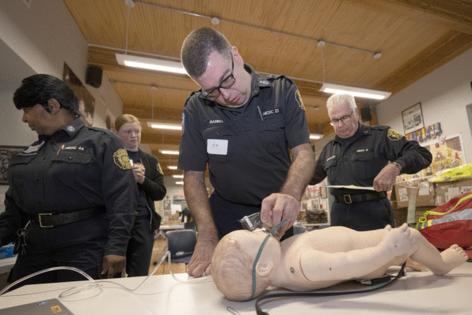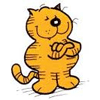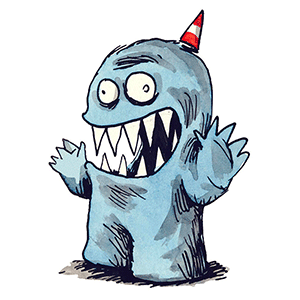Partnering for pediatric EMS training
Published in Health & Fitness
PHILADELPHIA — CPR can be lifesaving when a baby stops breathing — but only if it’s done properly.
Paramedics must push down hard enough on the infant’s chest to manually squeeze blood from the heart through the rest of the body, but not so hard that they risk puncturing an organ.
The hard-to-perfect technique is at the center of a new training partnership between Children’s Hospital of Philadelphia and the Philadelphia Fire Department.
The training for some 500 paramedics and emergency medical technicians, or EMTs, covers how to recognize signs that a child’s health is rapidly declining, medication protocol, techniques for starting an IV on smaller bodies with difficult-to-find veins, and CPR for children.
“It’s not the fancy procedures like putting in a tube or giving medications that save a child’s life,” said Theresa Walls, an emergency physician and medical director of CHOP’s EMS Institute. “If they’re not getting high quality CPR, none of those things are going to work.”
Such skills are part of standard EMS training that all first responders complete for certification. But children account for a small portion of 911 emergencies, which means those skills aren’t practiced often.
The purpose of the CHOP training is to make the EMS workers feel more competent and confident when they encounter pediatric patients.
“So when you’re in that high-stress situation, you don’t second guess your decisions,” said John Chattley, a fire service paramedic with the Philadelphia Fire Department.
About 10% of EMS calls involved patients aged 18 or younger, and only 1% were extremely sick, according to CHOP’s Center for Life Support Education & Outreach.
Respiratory problems and trauma, such as from a fall, are among the most common types of emergencies among children.
Basic First Aid and emergency response are similar regardless of the patient’s age, but most techniques — including how to evaluate patients for distress — are slightly different for children, said John Erbayri, manager of the Center for Life Support Education & Outreach at CHOP.
“Kids aren’t just little adults,” he said.
First responders need to be extra vigilant when evaluating and monitoring vital signs among children because they can decline more quickly than adults. Babies, in particular, can go into respiratory or cardiac crisis quickly because their bodies and regulatory systems are so small.
“They’re fine until they’re not,” CHOP’s Walls said. “They’re not in extremis right now, but the younger babies can fool you, they can turn quickly.”
For that reason, a central focus of the training is CPR for children. The lifesaving technique is used to manually circulate blood and oxygen within the body for someone who is unresponsive and not breathing.
Among children, chest compressions are shallower than adults. But perfecting the technique can be challenging.
People often don’t compress the chest at the right depth, or don’t push hard enough, Erbayri said.
The training also covers how to start an IV for a child — they require smaller amounts of medication and fluids, and their veins are often less visible compared to adults.
CHOP is holding the half-day training with a small group of Philadelphia Fire Department staffers every other week until all 500 who work with the ambulances are trained.
The hospital also hopes to expand its training to other EMS groups in the region.
©2025 The Philadelphia Inquirer, LLC. Visit at inquirer.com. Distributed by Tribune Content Agency, LLC.










Comments